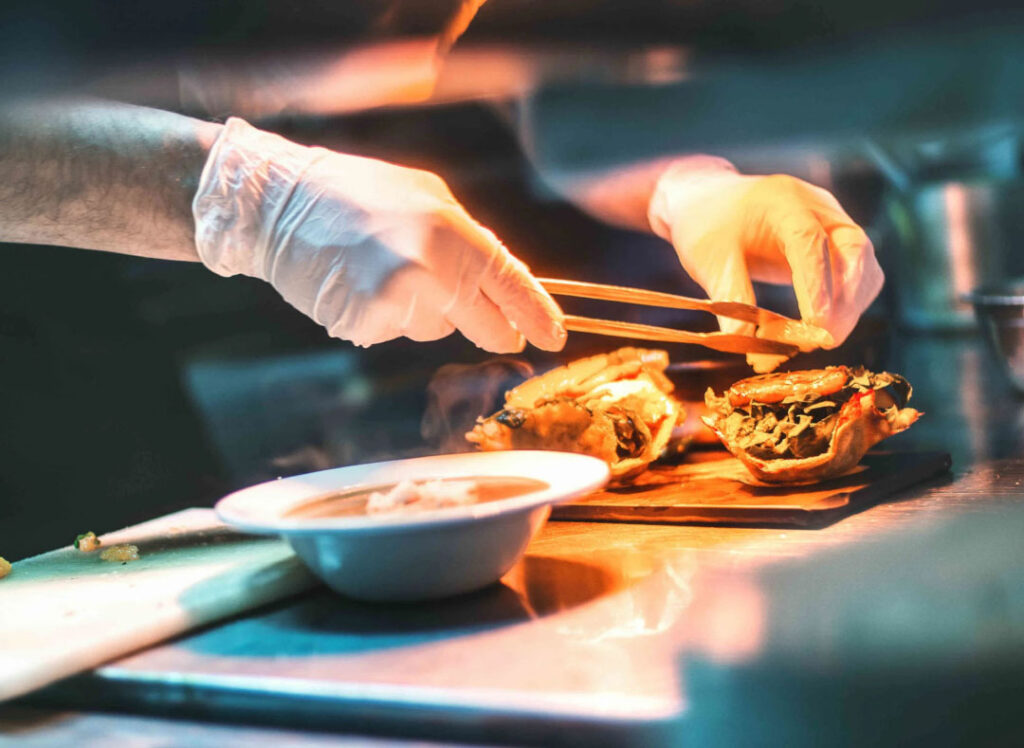Protecting patrons: Allergen management in hospitality
The last thing anyone wants is a customer having an allergic reaction to a meal. This is why an allergen management plan is so important. With tools such as safety checklists, risk assessment templates, and proper employee training, you’re putting yourself and your venue in the best position to manage this efficiently and safely. Let’s explore what the best allergen management plan looks like.

Introduction to allergen management
What is allergen management?
Allergen management involves:
- identifying allergens in food
- keeping ingredients separate to prevent cross-contact
- training staff on allergen handling
- informing customers about allergens.
These practices create a safer dining environment for patrons with food allergies.
Why is allergen management important?
Customer safety
Keeping your patrons safe is a top priority. Accidental eating or drinking of allergens can lead to severe allergic reactions, including anaphylaxis, which can be life-threatening. Effective allergen management helps prevent such incidents and promotes a safe dining experience.
Legal compliance
Compliance within the hospitality industry are in place for a reason. Many regions have regulations and laws requiring establishments to disclose allergen information to customers. Adhering to these regulations ensures legal compliance and helps avoid potential lawsuits.
Customer trust and loyalty
Clear communication of the allergens present helps build trust amongst patrons. When patrons feel confident that a restaurant understands and addresses their food allergies, they’re likelier to return and recommend it.
What should a food safety checklist for allergen management include?
Identification of allergens
Discover what common food allergens, such as peanuts, tree nuts, milk, eggs, soy, wheat, fish, and shellfish, are present in your venue. Once you have a clear idea of what you and your staff are working with, you can manage it properly step-by-step – starting with food control.
Ingredient control
Be in control of what you’re cooking. By actively managing and controlling the ingredients used in preparing dishes, you can prevent cross-contamination.
Separation and cross-contamination prevention
Work closely with your team to actively design kitchen workflows and procedures that minimize the risk of cross-contact between ingredients. Pay attention to your operations’ storage, preparation, and cooking stages. For example, keep the seafood prep areas to one designated location and never deviate. Or keep all of your nuts in airtight containers in specific storage areas.
Labeling pre-prepared sauces and dishes is also extremely important, so nothing falls through the cracks. Check out Operandio’s automated food prep labeling system.
Methods of communication
This is extremely important – communicate allergen information to customers through menus, signage, and staff training. Provide detailed information about ingredients and allergens in each dish. Your front-of-house staff need to communicate the presence of allergens to customers and ask if any of the customers have dietary requirements. Customers can then make informed decisions about what they can and can’t order.
Staff training
All team members should undergo comprehensive training in allergen management. This training must cover the importance of avoiding cross-contamination and instruct on how to respond to customer inquiries about allergens.
Conduct regular reviews
Regular audits and reviews of allergen management procedures help identify areas for improvement and guarantee ongoing compliance with safety standards.
Risk assessment template for allergen management
With a thorough risk assessment template, you can identify potential allergen-related hazards and identify ways to prevent them. While templates can vary based on your venue’s specific needs and regulations, here’s a basic outline that can help guide you:
- Provide an overview of the purpose and scope of the allergen risk assessment. Why are you doing this, and who is responsible for it? Specify these parties – chefs, servers, bartenders, etc.
- Include the name and location of your venue and the date of assessment.
- List all menu items and their ingredients and identify common allergens in each dish.
- Describe procedures for receiving, storing, and handling ingredients. Specify what is done to prevent cross-contamination during food preparation.
- Outline kitchen workflows from ingredient preparation to serving.
- Showcase your staff training program.
- Explain how allergen information is communicated to patrons – menus, signage, and verbal communication by staff.
- Detail how allergic reactions will be handled, including emergency contact information and the location of first aid supplies.
- Establish a schedule for regular audits and reviews.
- Specify where records related to allergen management will be kept.
- Identify the individuals responsible for reviewing and approving the allergen risk assessment.
Allergen management with Operandio
As the saying goes, if you fail to plan, then you plan to fail. Operandio’s digital platform provides a systematic and automated approach to managing allergens in your venue. Remove the guesswork and implement a successful risk assessment template.


